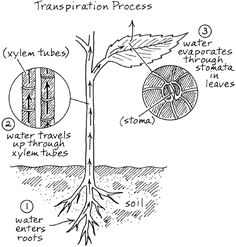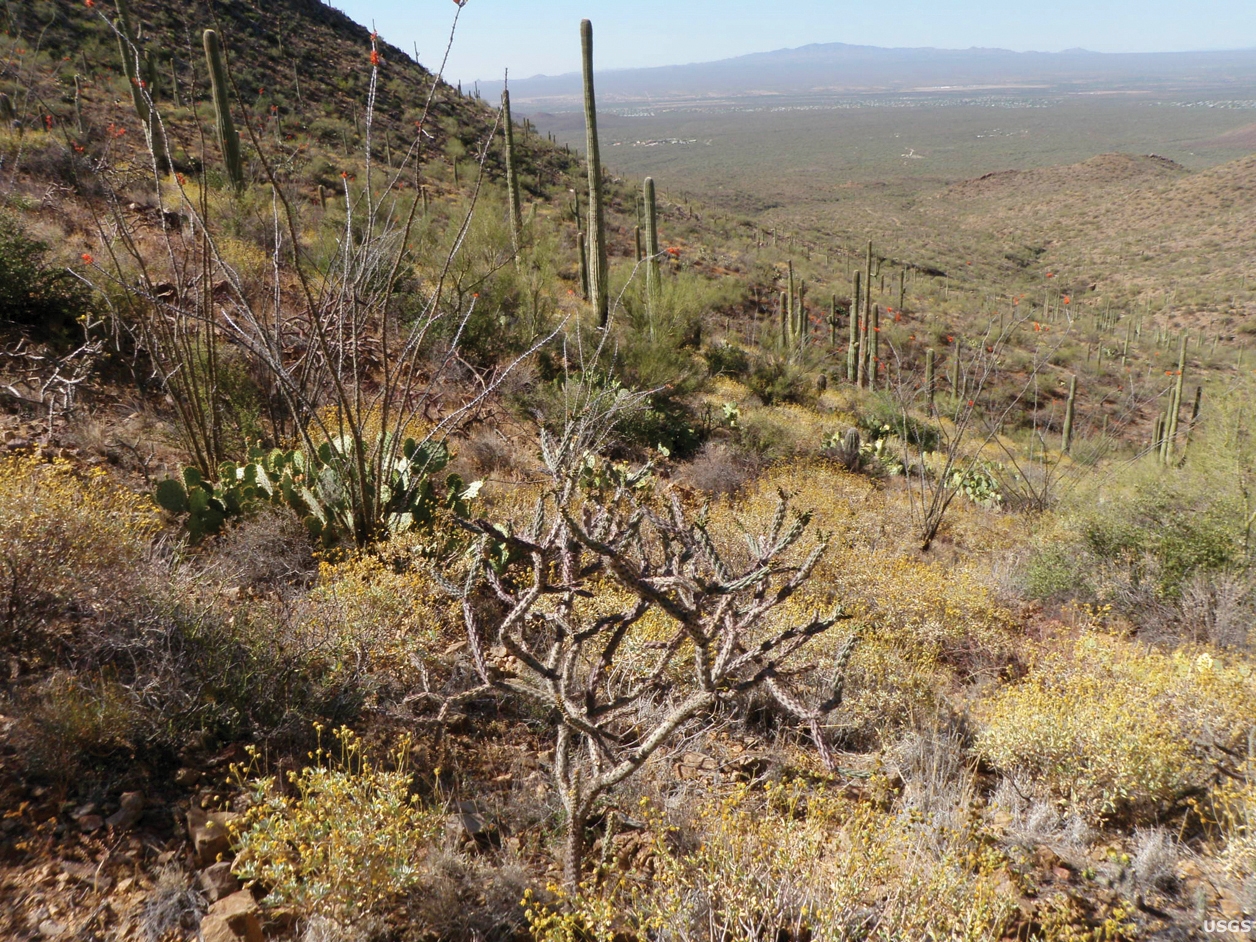A fairly easy question to pose is: How do plants transport water from their roots to their leaves? The answer is of course by transpiration.
Transpiration involves two key qualities for the process to occur. The first is water, because of its shape of an oxygen on one end and two hydrogens on the other, is polar. This polar quality allows weak hydrogen bonds to form between water molecules. This is called cohesion, the property of water to stick to itself. Because of the polarity of water, water sticks to other surfaces just like cohesion. This is called adhesion. Adhesion and cohesion work to gether to allow water to "climb" up the xylem of plants (otherwise known as capillary action). The second key point is that transpiration is the technical term for the evaporation of water from plants. As water evaporates through the stomata in the leaves (or any part of the plant exposed to air), it creates a negative pressure (also called tension or suction) in the leaves and tissues of the xylem. The negative pressure exerts a pulling force on the water in the plant’s xylem and draws the water upward (just like you draw water upward when you suck on a straw).
Environmental conditions like heat, wind, and dry air can increase the rate of transpiration from a plant’s leaves, causing water to move more quickly through the xylem. Sometimes, the pull from the leaves is stronger than the weak hydrogen bonds among the water molecules, and the column of water can break, causing air bubbles to form in the xylem. This sudden appearance of gas bubbles is called cavitation. To repair the gaps in the column of water in the xylem, plants create root pressure to push water upwards. At night, root cells release ions into the xylem, increasing its solute concentration. Water flows into the xylem by osmosis, pushing a broken water column up through the gap until it reaches the rest of the column (capillary cation and root pressure are how trees taller than 34 feet, which is about the farthest atmospheric pressure can push a liquid up a normal straw, can still get water from their roots to their leaves). If environmental conditions cause rapid water loss, plants can protect themselves by closing their stomata. However, after the stomata are closed, plants don’t have access to carbon dioxide (CO2) from the atmosphere, which shuts down photosynthesis. Some plants, like cactus and palo verde trees, must routinely juggle between the competing demands of getting CO2 and not losing too much water.



In the middle image above, the adhesion of two different viscous materials (water and mercury) are being compared.